Aussie Beaches - everyone should visit at least one in their lifetime!
DEFINITIONS
Aussie Beaches will continue to upload its definitions when and where possible, however if you come across something that you would like more information or clarity on. please do not hesitate to advise via our contact page.
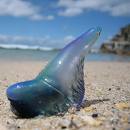
Bluebottle:-
outside of Australia are named "Portuguese-Men-Of-War" and can be found in both tropical and sub-tropical oceans - its body is large and gas filled, blue-green in colour, with blue tentacles that trail from its body. These tentacles contain stinging capsules, which are used to paralyze small marine life prior to being eaten. They will sting on contact, normally swimmers who cross their part - and whilst may be painful to the swimmer, in most cases is not painful - for treatment refer here
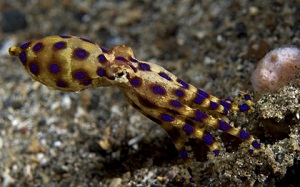
Blue Ringed Octopus:-
can also be known as "banded octopus" - generally found in rocks pools around the coast of Australia - yellowish-brown body with irregular blue rings/markings, around 20cm in diameter with extended tentacles, if disturbed the blue rings change to an electric blue - but be warned - do not be tempted to touch this creature - as whilst you may not feel its bite, the venom's effect is immediate and in some cases, can be fatal - for further information -
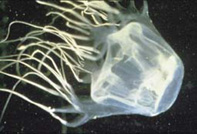
Box Jellyfish:-
formal name is "Chrionex" and also known as Sea Wasps or Marine Stingers mainly found in the Great Barrier Reef region and namely between October to May, range from transparent to pale blue in colour, 25cm in diameter for its body, with tentacles approximately 3 metres in length and its venom is one of the most deadly known to man, it is made up of toxins that can attack the heart, nervous system and skin cells. It is responsible for more human deaths in Australia than those caused by either Salt Water Crocodiles, Sharks or Snakes
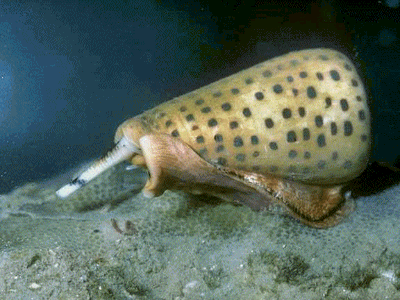
Cone Shellfish:-
also known as "cone snail:, there are over 600 different species, they live amongst reefs in tropical coastal areas, can grow to approximately 20cm in length, with its snout being able to extend to the length of its body and also can contain up to 30 darts within its mouth, with each being poisonous in addition to living in a pool of poison and just one drop of its venom is capable of killing up to 20 humans
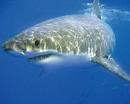
Great White Shark:-
formal name is "Carcharodon Carcharias", and also known as "Man-eater" or "White Pointer", can be found in the warmer waters of Australia, generally 6 metres in length, however on record one has been noted as being 11 metres in length, and as an adult can weigh over 2000 kilos, they are grey in colour with a white under belly and a huge jaw that contains rows of triangular teeth with serrated edges - whilst shark attacks do occur at Australian Beaches, they are small in numbers in comparison to number of people that go in the ocean, with even less being from the Great White - for statistics on this please refer to:
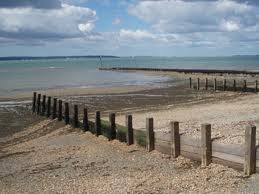
Groyne:-
a man-made barrier to prevent sand from moving down the beach - generally 1/2 metre in height and made from wood.
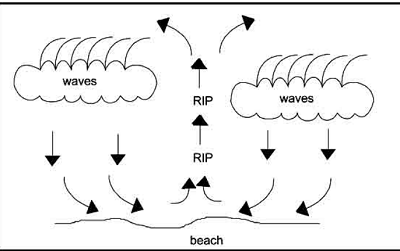
Rips:-
A rip is a strong channel of water flowing seaward from near the shore and are related to the format of the breaking waves. They can change location on any beach break and occur on any beach with breaking waves.
A classic rip current consists of 3 components:
i) a rip feeder which carries water along the beach close to the shoreline;
ii) a rip neck which is a narrow and fast offshore flow formed by the meeting of two feeder currents;
iii) a rip head, which forms seaward of the breaking waves and often
forms a plume of disturbed water or suspended sand as the rip current
slows down. While this is a common textbook definition, in reality rip
currents take on different forms and types, and longshore feeder
channels, for example, are not always present. Furthermore, under
certain conditions rip flow does not always extend past the surf zone,
but returns shorewards in a wide circle.
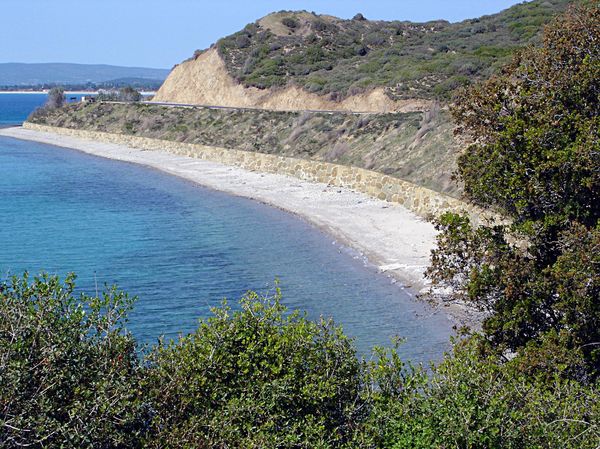
Seawall:-
a structure formed to protect landforms against tidal erosion.

Stonefish:-
formal name is "Synanceia" and are named due to both looking like a rock and living among stone beds, they live in tropical marine waters between Northern Queensland and North Western Australia, in addition some species can be found in rivers, there are 13 strong spines across its back, with each one surrounded by a sac of venom, with the spines standing up if threatened and piercing whatever has threatened - it can also live outside of the water for up to 24 hours with its venom still active and can be dangerous to beach walkers - for further information please refer to:
